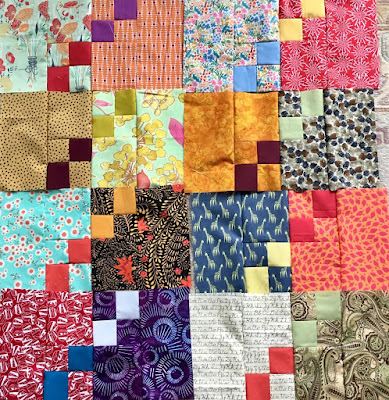 |
| N is for nautilus |
Using the alphabet from McCallsQuilting.com with several re-drafts and construction changes.
https://www.quiltingcompany.com/Quilt/best-day-ever-free-alphabet-characters-block-patterns/
The sashed blocks measure 9 by 13 1/2 inches finished. They go together quickly and it has been fun to find fabrics from my stacks and doing a bit of shopping for the missing ones.
And, because the blocks are so big, the top is coming together quickly too.
Anyone aware of a pieced Cyrillic alphabet quilt pattern? I found a few appliquéd and paper pieced on Pinterest.


































